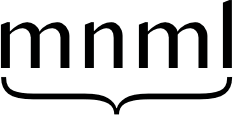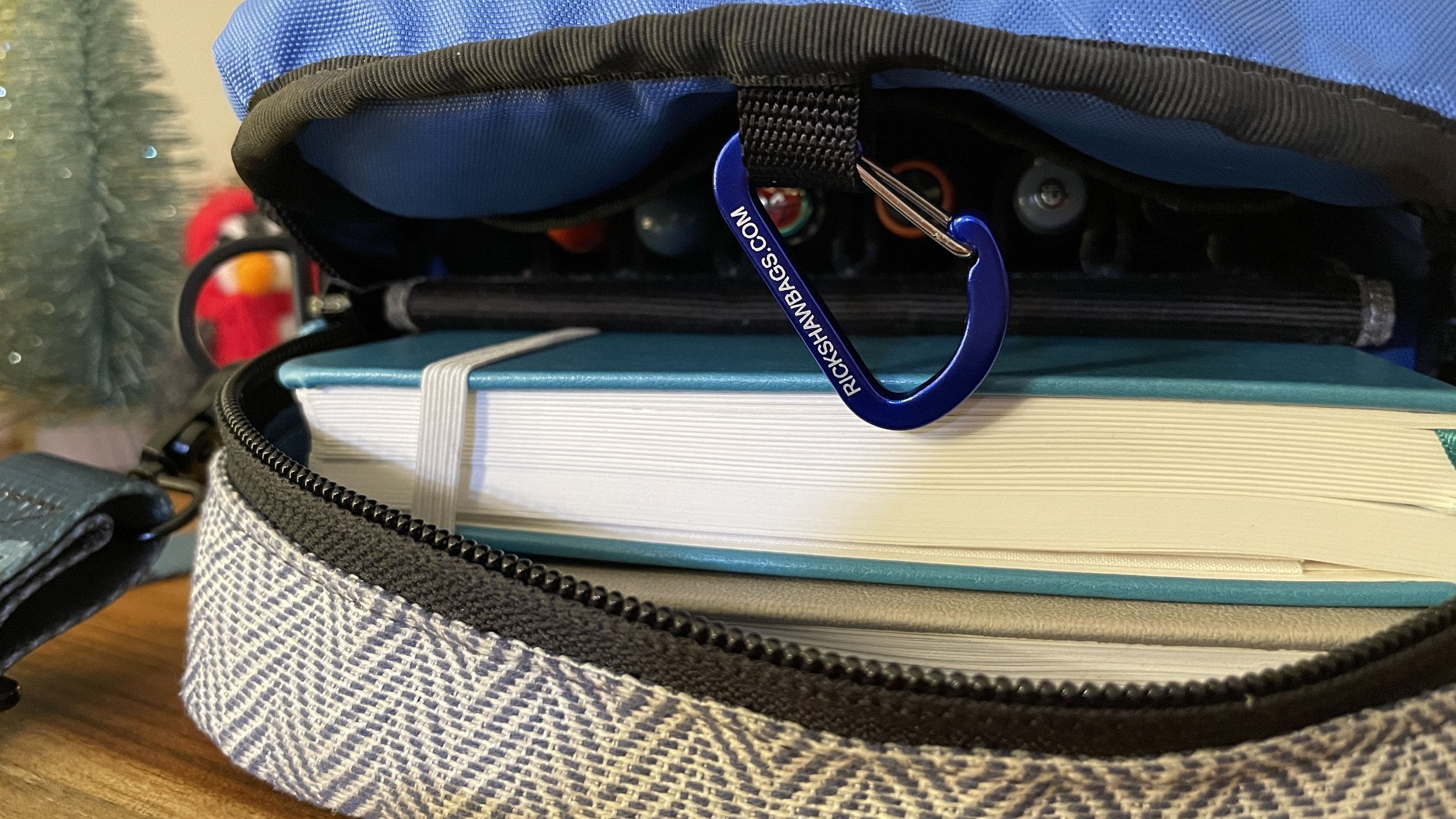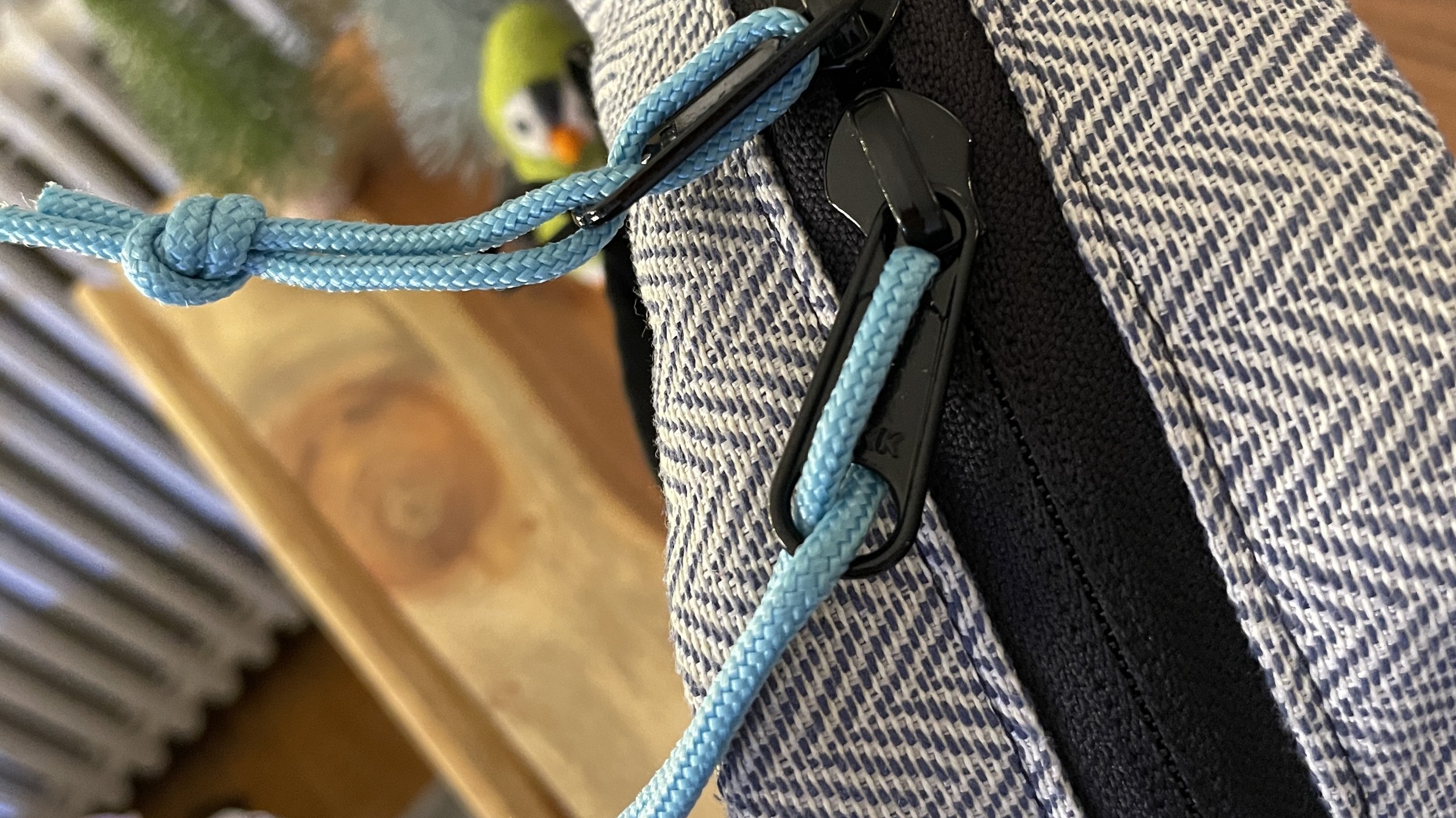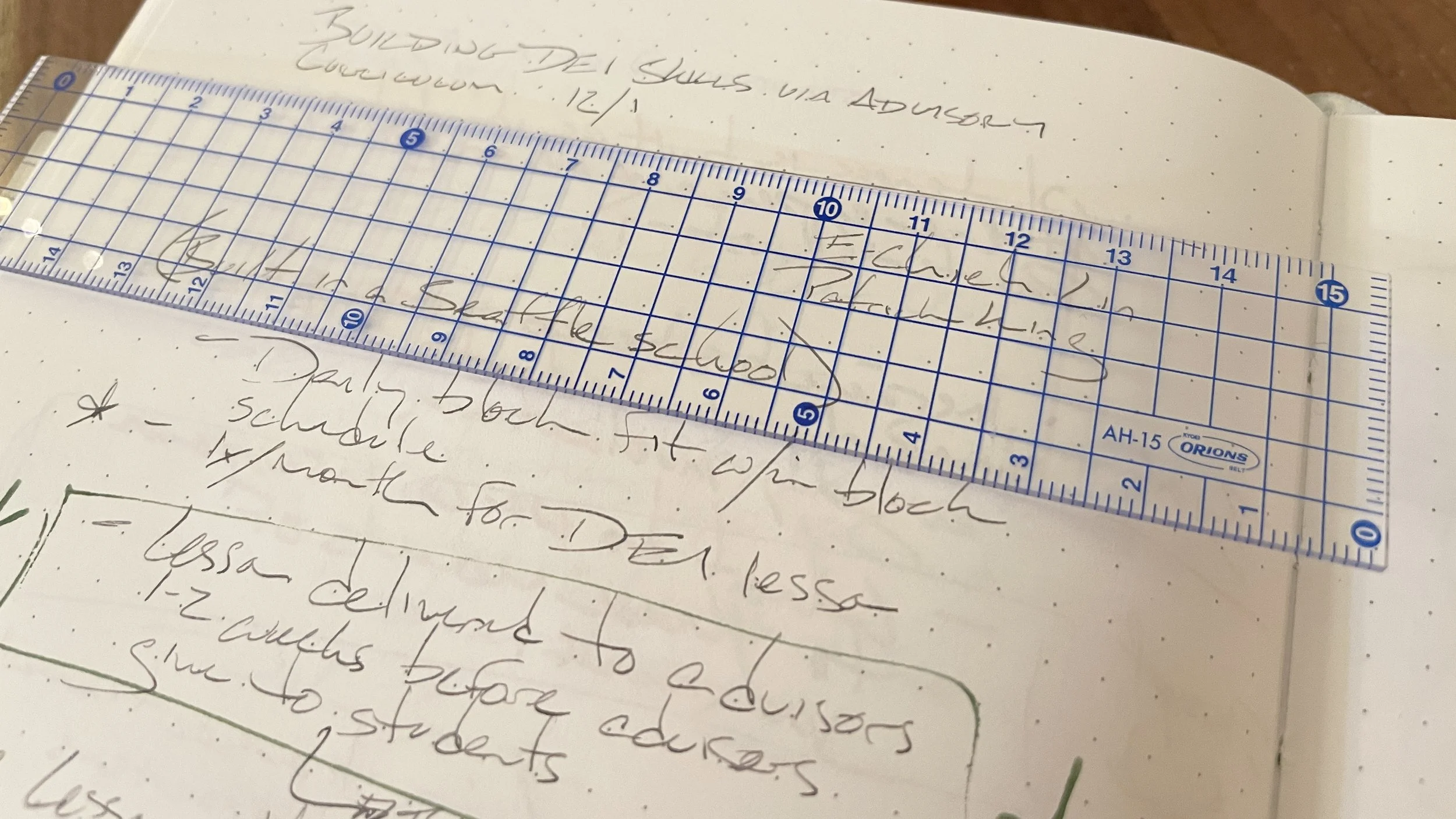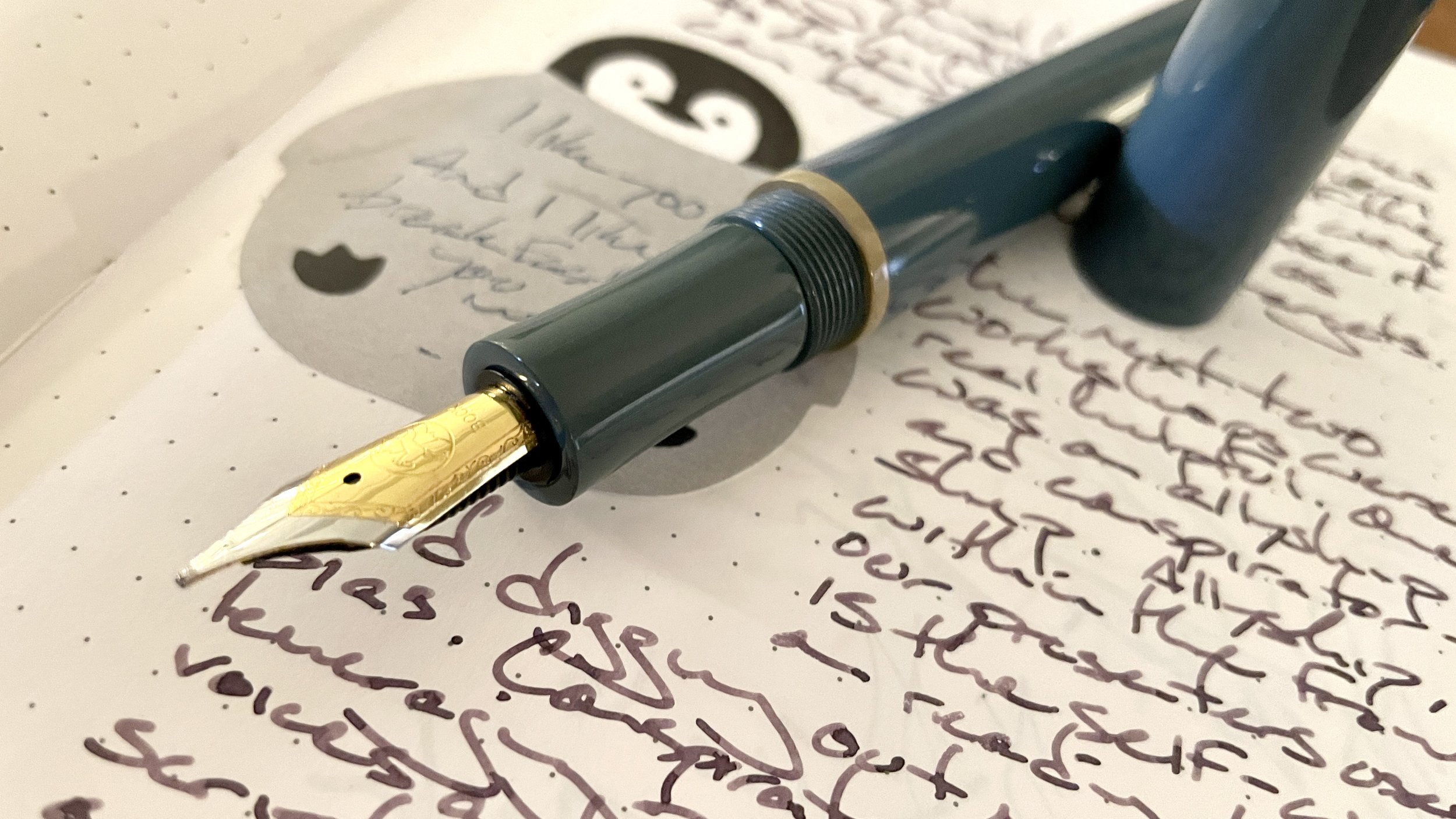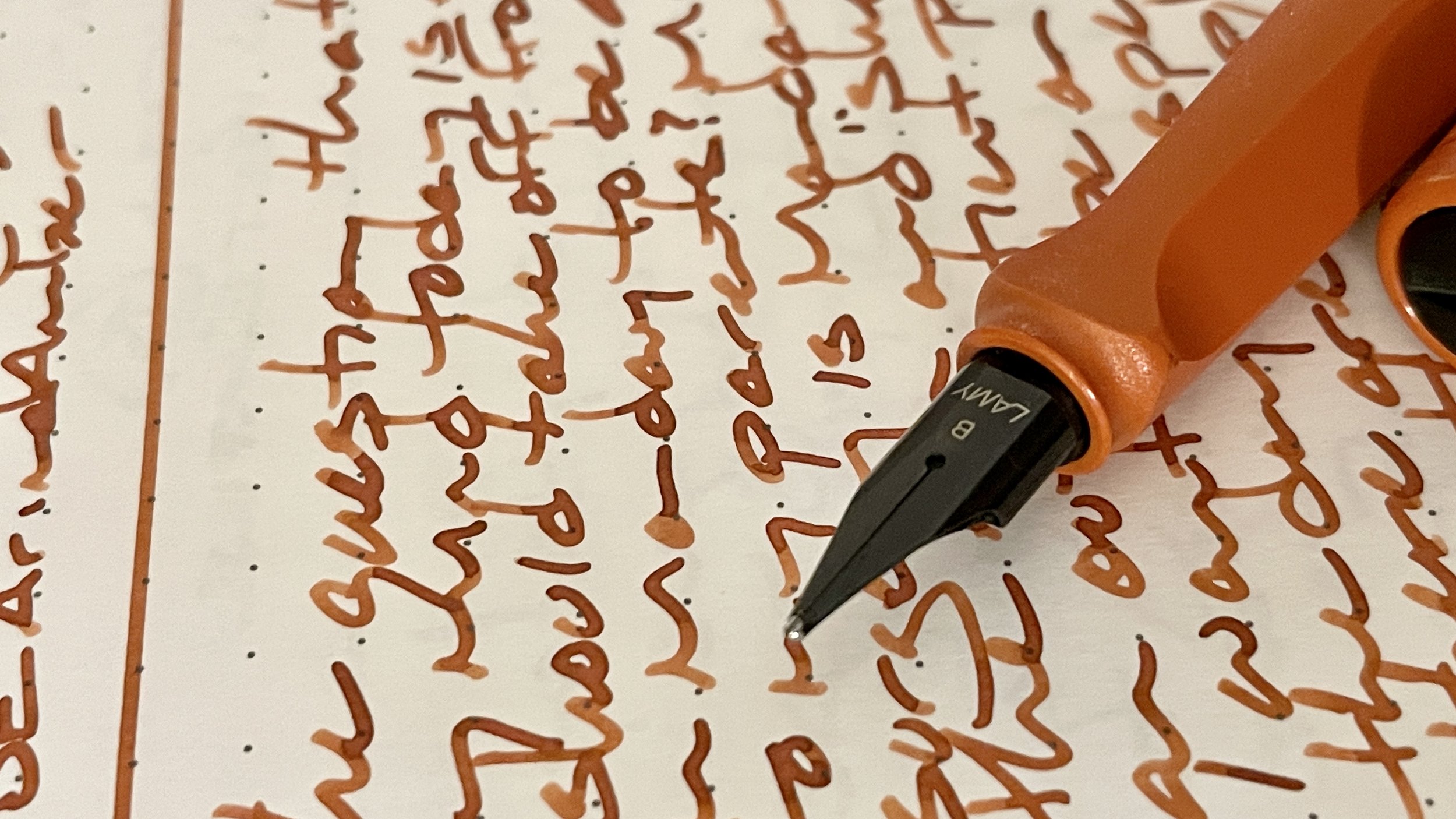A balanced academic conference carry kit — the non-pen parts
An everyday carry needs to meet the needs of your situation. An academic conference is a wild experience. A conference carry kit should be suitably wild to match.
Travel leads to writing on tiny trays provided by airlines. Scratch notes in hallways. Writing on tables. Writing on my lap. Writing at a restaurant in the conference-after-dark.
My conference kit needs to function in all of these spaces. And needs to do so in a way that keeps what I need at my fingertips — so it looks like I am organized. Appearances matter at academic conferences.
What follows is a tour of my conference carry kit, as it stands. I’m quite happy with my combination of tools. And I’m interested in how my kit compares to your trusted loadout.
My Rickshaw bag. A conference-suitable carrying case checks three boxes for me. Size, sound, and feet.
First box: a goldilocks of size. The bag needs to hold all of my gear while fitting easily underneath the ubiquitous narrow conference chair.
Further, the bag needs to be small enough that it can pass through narrow aisles without smacking into the faces of those who I walk passed.
My A5 Rickshaw is an outstanding example of goldilocks size. It holds two A5 notebooks, a six pen penvelope, and my miscellaneous conference carry. Small items like an extra mask, food vouchers, business cards from colleagues, and even a roll of washi tape.
A bag that lets me carry plurals
Second box: the silent open. I like to grab the materialsI need without making sounds that could distract the people around me. A silent zipper and padded metal parts to prevent clanging metal-on-metal sounds are musts.
A pretty pull cord doesn’t hurt, either
Third box: sturdy feet. The Rickshaw sports a flat bottom. So the bag stands upright underneath my chair, all on its own. Perfect for roundtable workshops and lecture-driven presentation sessions.
I just made you read “flat bottom” three times
Dual notebooks. I use one hardcover notebook as a flat writing surface during sessions that provide only a chair to sit in. I lay the notebook I write in right on top of the closed hardcover notebook.
Last week, I used my personal journal (an A5 Endless Recorder) as my writing surface. My teaching bullet journal (the Odyssey Neptune in A5) housed my conference notes.
Work well together. Look good together.
A ruler. A ruler is the sleeper all-star of my conference kit. A ruler is great for drawing neat heading line separators — as designed.
And a ruler with a pre-printed grid is excellent for effortlessly counting columns and rows in a notebook. This is especially important for keeping bullets indented identically across pages.
I tapped a blue Kyoie ruler for the cause
A ruler even serves as a handy bookmark during conference sessions that require changing seats and finding partners for discussion mid-workshop.
But a rulers are also excellent tools for neatly tearing pages out of notebooks — especially from notebooks that are unperforated. I find neat tear lines particularly useful when sharing contact information at the ends of sessions.
Pocket notebook. I’m currently using Pineider’s branded pocket notebook. The paper is friendly-enough with fountain pen inks. Minimal feathering, moderate shading, and quick drying time combine to make for legible scratch notes.
I pocket carry a round nib fountain pen for forgiving writing at odd hand-held angles. Colleagues share book recommendations, contacts and resources during rapid — and often short — hallway conversations in-between sessions. My pocket notebook houses these.
The act of pulling a pocket notebook from the front pocket of my Rickshaw or my pant pocket has multiple positive for me. Writing by hand helps me to remember the conversation. Additionally, writing by hand sends a clear message that I vouchsafe my colleagues’ ideas.
Lastly, my smartphone. I use my phone for all scheduling. Modern conferences use phone apps to render workshop and session schedules searchable. It’s breathtakingly easy to click on an interesting workshop and add it to my phone’s calendar. So I lean into two-click scheduling.
Further, Apple’s Calendar app deftly adds location meta-data. Many convention centers are now searchable in the Maps app. That makes it possible for my phone to give me directions within the convention center, too. Breezy.
I also appreciate the easy functionality of sending a quick event invitation to colleagues. The logistics of meeting up are handled by software wizardry.
My Hobonichi planner stays in the hotel room. Use what works, right?
Notebooks to write in — and to write on. Pens to write with (which I’ll outline mid-week). A ruler for organization and destruction. A smartphone for scheduling
This week’s Inked Tines update includes a collection of six pens I have not yet shared out. A sextet I intend to use this coming week, too. My last week before the Inkvent challenge begins. Dunh-dun-dunh.
Toolset
Pens. I’m including a shot of last week’s conference sextet in lieu of a single standout. These six pens took care of me.
The working family
Notebooks. Work bujo. Odyssey Neptune 400 (A5). Last week’s bullet journaling took me from page 214 to 229. Sixteen new pages — ten of which are detailed notes from workshops and lectures. Two more are meeting notes. An additional two are lesson plan outlines. And the final two are a two-page weekly task list spread. Busy-busy.
The Pilot 74’s minute EF writing lines drove my writing on every page of workshop notes.
I alternated other pens (and ink colors) for my own thoughts and reflections during those workshops. The Sailor’s MF line in Aonibi easily stands out against Downpour in EF. As does KOBE’s Arima Amber and J. Herbin’s Vert Empire.
Easily distinguishable “facts” beside the broad oranges of my own thinking
All three inks are strong shaders. Shading kept me plugged into my notes during 2-hour long sessions. Anchors to reign in a wandering attention span.
Journal. Endless Recorder Regalia in Mountain Snow (A5). I wrote seven pages of journal entries over the course of last week. Quality rather than quantity.
Quality and penguin
Three medium-length reflections are the heart of my week’s journaling. I chose one specific aspect of my day and unpacked it. Three times. Analytically reflective.
I opted for B nibs with my targeted reflections. The Able Snail’s B on Sunday and Friday, and the Sailor Z nib last Saturday.
Shading brings out the thoughtfulness
I also recorded two pages of scratch notes. One houses the scribbles that accompany my weekly currently inked planning. The other is a scribble pad for nibs my good friend brought over to the house on Saturday.
Written dry. The Pilot 74 ran empty by Sunday evening. I leaned on the pairing of EF nib and Dominant Industry’s Downpour heavily throughout last week.
Detailed workshop notes, scratch notes and reflection notes dominated my writing. Add to that thirteen pages of reading notes.
Thems some narrow squiggles
Newly inked. I only arrived back home on Saturday. Minimal time for inking new pens. I dig a schedule that keeps me honest with my currently inked plan.
The collection
Incoming / new orders. Not one new purchase last week. I was too busy needing out on educational workshops.
But I have begun swatching Diamine’s Inkvent calendar. I open each bottle on it’s appointed day. Patience, grasshopper.
Outgoing / trades or sales. Boop.
Currently reading and listening
Fiction. I continued on towards the Last Battle in Robert Jordan’s conclusion to his famous Wheel of Time series, The Gathering Storm.
I read seven chapters on my iPhone. A journey of 128 iPhone-sized pages.
I appreciate reading fiction digitally as I can carry my book with me without any additional weight. If I have my phone then I have my book. Digital convenience.
Nonfiction. Plane rides are excellent venues for reading. I’m trapped in my seat. Just me, my music, my book, and my neighbors’ elbows.
I started and finished Francis Fukuyama’s Liberalism and its Discontents between the plane rides to and from last week’s a academic conference. 162 pages.
Margin notes aplenty. I enjoy a book that supports its argument with connections to other authors’ thinking. An excellently executed “why not meet in the middle?” argument.
I turned to my most recent favorite pencil, the Mitsubishi 9850. A moderately hard core that leaves a clean writing line — even on spongy paperback paper.
I believe I improperly installed my Blackwing sharpener’s new blade. The tip shaping blade simply shatters the led point when I attempt to use sharpener two.
Some fiddling is called for
Music. I stumbled onto a new-to-me collaboration between the artists softy and Wishes and Dreams. Solo piano meets lo-fi.
This has played in my headset while exercising and meditating. It’s played from computer speakers while typing up conference notes. It’s played on the entire plane ride home on Saturday. A perfect EP for decorating background head-space beautifully.

